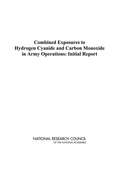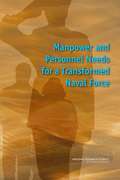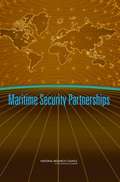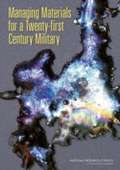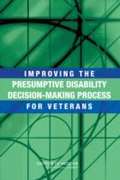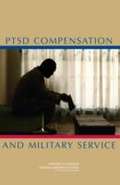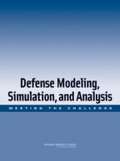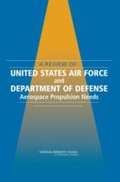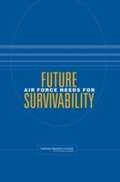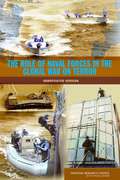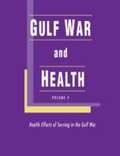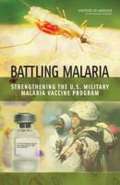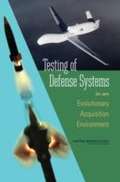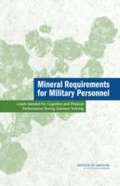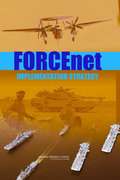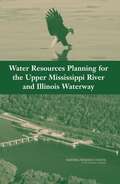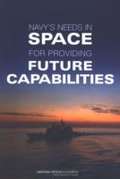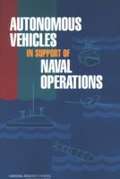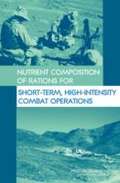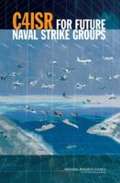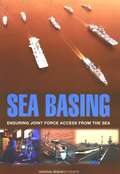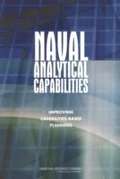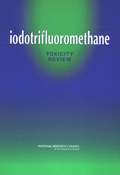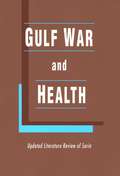- Table View
- List View
Combined Exposures to Hydrogen Cyanide and Carbon Monoxide in Army Operations: Initial Report
by National Research Council of the National AcademiesIn response to a request from the U.S. Army, a committee convened by the National Research Council (NRC) conducted the first in a sequence of studies evaluating the combined health effects of low-level exposure to two chemicals Army personnel are likely to be exposed to in firing tank weapons. The Army sought information on whether the two chemicals, hydrogen cyanide and carbon monoxide, result in similar health impacts and should be assessed together when establishing exposure limits. Based on a review of the scientific literature, the report finds that the biochemical health impacts of the chemicals are similar and that the Army's proposed approach to setting exposure limits is appropriate. Because previous research has focused on high exposures, this initial NRC report recommends that futher neurological studies at low concentrations of exposure to the chemicals be conducted.
Manpower and Personnel Needs for a Transformed Naval Force
by National Research Council of the National AcademiesThe Department of Defense (DOD) is committed to transforming the nation's armed forces to meet the military challenges of the future. One approach to achieving this transformation is by leveraging advances in science and technology. New technologies and innovations are integral to today's military actions, and associated changes have rippled through all aspects of operations, highlighting the need for changes in policies related to military personnel. At the request of the Force Chief of Naval Operations, the NRC reviewed the military manpower and personnel policies and studies currently underway in the DOD and developed an implementation strategy for the Department of the Navy's future military manpower and personnel needs. This book presents an introduction to current personnel policies of and concerns facing the Naval forces; an assessment of demographic, technological, and other forces affecting future personnel needs and availability; a summary and assessment of previous studies; an examination of the role of research tools in implementing personnel policy change; and an analysis of obstacles to and strategies for transforming the Naval forces.
Maritime Security Partnerships
by National Research Council of the National AcademiesTo offer security in the maritime domain, governments around the world need the capabilities to directly confront common threats like piracy, drug-trafficking, and illegal immigration. No single navy or nation can do this alone. Recognizing this new international security landscape, the former Chief of Naval Operations called for a collaborative international approach to maritime security, initially branded the “1,000-ship Navy.” This concept envisions U.S. naval forces partnering with multinational, federal, state, local and private sector entities to ensure freedom of navigation, the flow of commerce, and the protection of ocean resources. This new book from the National Research Council examines the technical and operational implications of the “1,000-ship Navy,” as they apply to four levels of cooperative efforts: U.S. Navy, Coast Guard, and merchant shipping only; U.S. naval and maritime assets with others in treaty alliances or analogous arrangements; U.S. naval and maritime assets with ad hoc coalitions; and U.S. naval and maritime assets with others than above who may now be friendly but could potentially be hostile, for special purposes such as deterrence of piracy or other criminal activity.
Managing Materials for a Twenty-first Century Military
by National Research Council of the National AcademiesSince 1939, the U.S. government, using the National Defense Stockpile (NDS), has been stockpiling critical strategic materials for national defense. The economic and national security environments, however, have changed significantly from the time the NDS was created. Current threats are more varied, production and processing of key materials is more globally dispersed, the global competition for raw materials is increasing, the U.S. military is more dependent on civilian industry, and industry depends far more on just-in-time inventory control. To help determine the significance of these changes for the strategic materials stockpile, the Department of Defense asked the NRC to assess the continuing need for and value of the NDS. This report begins with the historical context of the NDS. It then presents a discussion of raw-materials and minerals supply, an examination of changing defense planning and materials needs, an analysis of modern tools used to manage materials supply chains, and an assessment of current operational practices of the NDS.
Improving The Presumptive Disability Decision-making Process For Veterans
by Institute of Medicine of the National AcademiesProduced by a committee of the Institute of Medicine, this report describes the current decision-making process for the provision of appropriate health care and disability compensation for veterans with health conditions that develop after military service which, in the absence of scientific evidence to create a complete link, are presumed to be connected to their military service. The report contains a brief history of presumptive disability decisions, description of the decision-making process, legislative background on presumptions, and evaluations of selected case studies of specific exposures and illnesses, and proposes a revised framework for building stronger scientific evidence into the process for making presumptive decisions in the future. The 13 appendices contain information organized by the Committee and Institute of Medicine to assist readers in understanding the background and issues; three of the appendices are in the book and ten are on an accompanying CD-ROM. No subject index. Annotation ©2009 Book News, Inc. , Portland, OR (booknews. com)
Ptsd Compensation And Military Service
by Institute of Medicine National Research Council of the National AcademiesThe scars of war take many forms: the limb lost, the illness brought on by a battlefield exposure, and, for some, the psychological toll of encountering an extremely traumatic event. PTSD Compensation and Military Service presents a thorough assessment of how the U.S. Department of Veterans Affairs evaluates veterans with possible posttraumatic stress disorder and determines the level of disability support to which they are entitled. The book presents a history of mental health disability compensation of military personnel and reviews the current compensation and pension examination procedure and disability determination methodology. It offers a number of recommendations for changes that would improve the fairness, consistency, and scientific foundation of this vital program. This book will be of interest and importance to policy makers, veterans affairs groups, the armed forces, health care organizations, and veterans themselves.
Defense Modeling, Simulation, and Analysis: MEETING THE CHALLENGE
by National Research Council of the National AcademiesModeling, simulation, and analysis (MS&A) is a crucial tool for military affairs. MS&A is one of the announced pillars of a strategy for transforming the U.S. military. Yet changes in the enterprise of MS&A have not kept pace with the new demands arising from rapid changes in DOD processes and missions or with the rapid changes in the technology available to meet those demands. To help address those concerns, DOD asked the NRC to identify shortcomings in current practice of MS&A and suggest where and how they should be resolved. This report provides an assessment of the changing mission of DOD and environment in which it must operate, an identification of high-level opportunities for MS&A research to address the expanded mission, approaches for improving the interface between MS&A practitioners and decision makers, a discussion of training and continuing education of MS&A practitioners, and an examination of the need for coordinated military science research to support MS&A.
A REVIEW OF UNITED STATES AIR FORCE and DEPARTMENT OF DEFENSE Aerospace Propulsion Needs
by National Research Council of the National AcademiesThe National Academies Press (NAP)--publisher for the National Academies--publishes more than 200 books a year offering the most authoritative views, definitive information, and groundbreaking recommendations on a wide range of topics in science, engineering, and health. Our books are unique in that they are authored by the nation's leading experts in every scientific field.
Future Air Force Needs For Survivability
by National Research Council of the National AcademiesA key technical issue for future Air Force systems is to improve their ability to survive. Increased use of stealth technology is proposed by many to be the major element in efforts to enhance survivability for future systems. Others, however, suggest that the high cost and maintenance required of stealth technology make increased speed potentially more productive. To help address this issue, the Air Force asked the NRC to investigate combinations of speed and stealth that would provide U.S. aircraft with a high survival capability in the 2018 period, and to identify changes in R&D plans to enable such aircraft. This report presents a review of stealth technology development; a discussion of possible future missions and threats; an analysis of the technical feasibility for achieving various levels of stealth and different speeds by 2018 and of relevant near-term R&D needs and priorities; and observations about the utility of speed and stealth trade-offs against evolving threats.
The Role Of Naval Forces In The Global War On Terror
by National Research Council of the National AcademiesThe growth of the terrorism threat to the nation’s security has created significant strategic challenges for U.S. armed forces in fighting this global war on terrorism (GWOT). For the Navy, the challenges have centered on developing maritime capabilities to prosecute the GWOT as far forward as possible. To assist the Navy’s planning in this area, the former Chief of Naval Operations requested the NRC to conduct an assessment of the adequacy of and prospects for improving the role of Naval Forces in the GWOT. The study developed a defense-in-depth framework as the organizing principle for the report. The report contains information as described in 5 U.S.C. 552(b) and therefore could not be released to the public in its entirety. The public version consists of an executive summary that presents an assessment of the transformation of naval forces for addressing the GWOT; a brief description of the defense-in-depth framework; and a list of findings and major recommendations.
GULF WAR and HEALTH: VOLUME 6
by Institute of Medicine of the National AcademiesThe sixth in a series of congressionally mandated reports on Gulf War veterans' health, this volume evaluates the health effects associated with stress. Since the launch of Operation Desert Storm in 1991, there has been growing concern about the physical and psychological health of Gulf War and other veterans. In the late 1990s, Congress responded by asking the National Academy of Sciences (NAS) to review and evaluate the scientific and medical literature regarding associations between illness and exposure to toxic agents, environmental or wartime hazards, and preventive medicines or vaccines in members of the armed forces who were exposed to such agents. Deployment to a war zone has a profound impact on the lives of troops and on their family members. There are a plethora of stressors associated with deployment, including constant vigilance against unexpected attack, difficulty distinguishing enemy combatants from civilians, concerns about survival, caring for the badly injured, and witnessing the death of a person. Less traumatic but more pervasive stressors include anxiety about home life, such as loss of a job and income, impacts on relationships, and absence from family. The focus of this report, by the Institute of Medicine (IOM) Committee on Gulf War and Health: Physiologic, and Psychosocial Effects of Deployment-Related Stress, is the long-term effects of deployment-related stress. Gulf War and Health: Volume 6. Physiologic, and Psychosocial Effects of Development Related Stress evaluates the scientific literature regarding association between deployment-related stressors and health effects, and provides meaningful recommendations to remedy this problem.
GULF WAR and HEALTH: HEALTH EFFECTS OF SERVING IN THE GULF WAR
by Institute of Medicine of the National AcademiesIn 1998, in response to the growing concerns that many returning Gulf War veterans began reporting numerous health problems that they believed to be associated with their service in the Persian Gulf, Congress passed two laws which directed the Secretary of Veterans Affairs to enter into a contract with the National Academy of Sciences. They were tasked to review and evaluate the scientific and medical literature regarding associations between illness and exposure to toxic agents, environmental or wartime hazards, and preventive medicines or vaccines associated with Gulf War service. In addition, the Institute of Medicine of the National Academy of Sciences provided conclusions to these studies that were considered when making decisions about compensation to veterans. Gulf War and Health Volume 4: Health Effects of Serving in the Gulf War summarizes in one place the current status of health effects in veterans deployed to the Persian Gulf irrespective of exposure information. This book reviews, evaluates, and summarizes both peer-reviewed scientific and medical literature addressing the health status of Gulf War veterans.
Battling Malaria: Strengthening The U.s. Military Malaria Vaccine Program
by Institute of Medicine of the National AcademiesThe National Academies Press (NAP)--publisher for the National Academies--publishes more than 200 books a year offering the most authoritative views, definitive information, and groundbreaking recommendations on a wide range of topics in science, engineering, and health. Our books are unique in that they are authored by the nation's leading experts in every scientific field.
Testing of Defense Systems in an Evolutionary Acquisition Environment
by National Research Council of the National AcademiesThe National Academies Press (NAP)--publisher for the National Academies--publishes more than 200 books a year offering the most authoritative views, definitive information, and groundbreaking recommendations on a wide range of topics in science, engineering, and health. Our books are unique in that they are authored by the nation's leading experts in every scientific field.
Mineral Requirements for Military Personnel: Levels Needed for Cognitive and Physical Performance During Garrison Training
by Institute of Medicine of the National AcademiesThe National Academies Press (NAP)--publisher for the National Academies--publishes more than 200 books a year offering the most authoritative views, definitive information, and groundbreaking recommendations on a wide range of topics in science, engineering, and health. Our books are unique in that they are authored by the nation's leading experts in every scientific field.
FORCEnet: IMPLEMENTATION STRATEGY
by National Research Council of the National AcademiesThe National Academies Press (NAP)--publisher for the National Academies--publishes more than 200 books a year offering the most authoritative views, definitive information, and groundbreaking recommendations on a wide range of topics in science, engineering, and health. Our books are unique in that they are authored by the nation's leading experts in every scientific field.
Water Resources Planning for the Upper Mississippi River and Illinois Waterway
by National Research Council of the National AcademiesThe U.S. Army Corps of Engineers recently completed its feasibility study for the Upper Mississippi River-Ilinois Waterway, which was one of the agency's longest and most complicated studies in its history. The first two reports from this WSTB committee reviewed analytical aspects of the Corps feasibility study. This report considered the broader issue of managing the multiple resources of the Upper Mississippi River and Illinois Waterway, especially with regard to several, recently-issued NRC reports on Corps of Engineers planning procedures. The report finds that a key issue regarding planning decisions on these river systems is the ambiguity related to several different pieces of legislation and acts that govern river management, and thus recommends that the administration and Congress clarify the federal intent for managing this river and waterway system. The report recommends an independent, retrospective reivew of the experience with a federal inter-agency Principals Group, which was convened to provide guidance to the Corps study. It is also recommended that the Corps strive to incorporate flexible, adaptive management principles through its entire water planning program, including operations of the lock and dam system.
Navy's Needs In Space For Providing Future Capabilities
by National Research Council of the National AcademiesThe United States must operate successfully in space to help assure its security and economic well being. The Department of the Navy is a major user of space capabilities, although those capabilities are now primarily provided by DOD, the Air Force, and NOAA. Following a DOD assessment of national space security management in 2001, the Navy commissioned a Panel to Review Space to assess Navy space policy and strategy. As an extension of that review, the NRC was requested by the Navy to examine its needs in space for providing future operational and technical capabilities. This report presents a discussion of the strategic framework of future space needs, the roles and responsibilities for meeting those needs, an assessment of Navy support to space mission areas, and a proposed vision for fulfilling Naval forces space needs.
Autonomous Vehicles In Support Of Naval Operations
by National Research Council of the National AcademiesThe National Academies Press (NAP)--publisher for the National Academies--publishes more than 200 books a year offering the most authoritative views, definitive information, and groundbreaking recommendations on a wide range of topics in science, engineering, and health. Our books are unique in that they are authored by the nation's leading experts in every scientific field.
Nutrient Composition Of Rations For Short-term, High-intensity Combat Operations
by National Research Council of the National AcademiesRecognizing the importance of good nutrition for physical and mental status, the Department of Defense asked the Institute of Medicine to guide the design of the nutritional composition of a ration for soldiers on short-term, high-stress missions. Nutrient Composition of Rations for Short-Term, High-Intensity Combat Operations considers military performance, health concerns, food intake, energy expenditure, physical exercise, and food technology issues. The success of military operations depends to a large extent on the physical and mental status of the individuals involved. Appropriate nutrition during assault missions is a continuous challenge mainly due to diminished appetites of individuals under stress. Many less controllable and unpredictable factors, such as individual preferences and climate, come into play to reduce appetite. In fact, soldiers usually consume about half of the calories needed, leaving them in a state called “negative energy balance.” The consequences of being in negative energy balance while under these circumstances range from weight loss to fatigue to mental impairments. An individual’s physiological and nutritional status can markedly affect one’s ability to maximize performance during missions and may compromise effectiveness. With the number of these missions increasing, the optimization of rations has become a high priority.
C4isr For Future Naval Strike Groups
by National Research Council of the National AcademiesThe Navy has put forth a new construct for its strike forces that enables more effective forward deterrence and rapid response. A key aspect of this construct is the need for flexible, adaptive command, control, communications, computers, intelligence, surveillance, and reconnaissance (C4ISR) systems. To assist development of this capability, the Navy asked the NRC to examine C4ISR for carrier, expeditionary, and strike and missile defense strike groups, and for expeditionary strike forces. This report provides an assessment of C4ISR capabilities for each type of strike group; recommendations for C4ISR architecture for use in major combat operations; promising technology trends; and an examination of organizational improvements that can enable the recommended architecture.
Sea Basing: Ensuring Joint Force Access From The Sea
by National Research Council of the National AcademiesThe availability of land bases from which to launch and maintain military, diplomatic, and humanitarian relief operations is becoming increasingly uncertain because of physical or political constraints. The ability to operate from a sea base, therefore, is likely to become more and more important. The Defense Science Board recently concluded that Sea Basing will be a critical future joint military capability and that DOD should proceed to develop such capability. Following the DSB report, the Navy requested that the National Research Council (NRC) convene a workshop to assess the science and technology base, both inside and outside the Navy, for developing Sea Basing and to identify R&D for supporting future concepts. This report of the workshop includes an examination of Sea Basing operational concepts; ship and aircraft technology available to make Sea Basing work; and issues involved in creating the sea base as a joint system of systems.
Naval Analytical Capabilities: Improving Capabilities-based Planning
by National Research Council of the National AcademiesThe National Academies Press (NAP)--publisher for the National Academies--publishes more than 200 books a year offering the most authoritative views, definitive information, and groundbreaking recommendations on a wide range of topics in science, engineering, and health. Our books are unique in that they are authored by the nation's leading experts in every scientific field.
Iodotrifluoromethane: Toxicity Review
by Subcommittee on IodotrifluoromethaneThe U.S. military is considering using a compound called iodotrifluoromethane (CF3I) for fire suppression to replace previously-used compounds (halons) that are being phased out because they deplete the ozone layer. This report reviews available toxicological data on CF3I and evaluates the scientific basis of the U.S. Army's proposed exposure limit of 2,000 parts per million (ppm). The report recommends that CF3I be used for fire suppression in normally unoccupied spaces because of its potential to cause cardiac sensitization in test animals. The report also recommends that further genotoxicity testing be conducted (testing for changes in genetic material), and that CF3I be assessed for its potential to cause cancer. Should the Army decide to use CF3I, information should be collected and evaluated on how much of the chemical or any of its degradation products might be released and how often.
Gulf War and Health: Updated Literature Review of Sarin
by Committee on Gulf WarThe Gulf War in 1990-1991 was considered a brief and successful military operation, with few injuries or deaths of US troops. The war began in August 1990, and the last US ground troops returned home by June 1991. Although most Gulf War veterans resumed their normal activities, many soon began reporting a variety of nonexplained health problems that they attributed to their participation in the Gulf War, including chronic fatigue, muscle and joint pain, loss of concentration, forgetfulness, headache, and rash. Because of concerns about the veterans' health problems, the Department of Veterans Affairs (VA) requested that the Institute of Medicine (IOM) review the scientific and medical literature on the long-term adverse health effects of agents to which the Gulf War veterans may have been exposed. This report is a broad overview of the toxicology of sarin and cyclosarin. It assesses the biologic plausibility with respect to the compounds in question and health effects.
